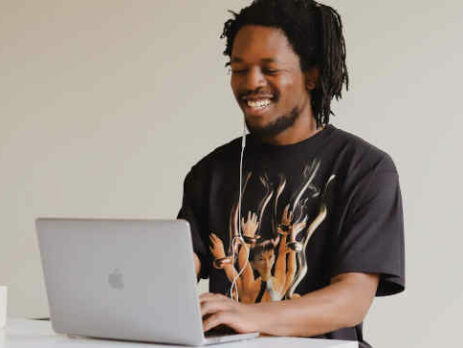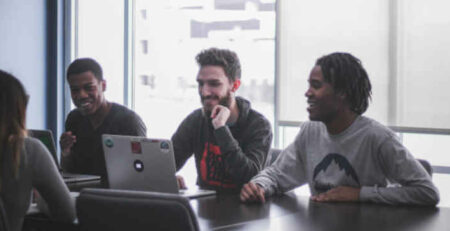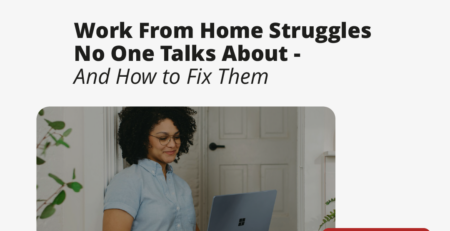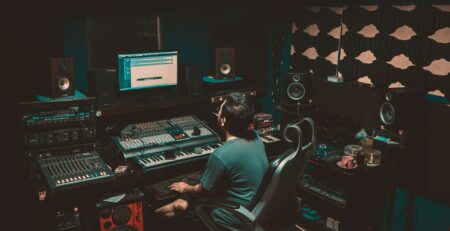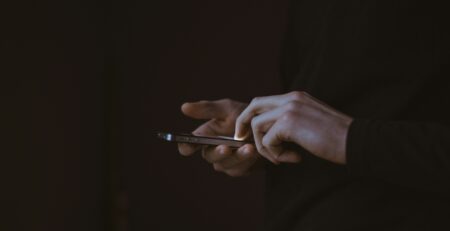The Future of Freelancing in 2021
Like many industries, creatives currently find themselves in the midst of the Freelance Revolution. In addition to new technology that allows independent agents to take on work they couldn’t have handled before, businesses are using staffing strategies called flexible blended workforces that are driving up the demand for freelance workers.
The outlook for creative freelance work is overwhelmingly positive in 2021, but there are some potential drawbacks for creatives and the companies that hire them. Choosing freelancing or full-time will likely remain difficult for creatives. Read on to find out everything you need to know about creative freelance work and what you can expect from it in the near future.
What is Creative Freelancing?
Though the word ‘freelancer’ is comparatively new, arriving in the English language in the 1800s, the concept of untethered professionals is much older than that. Some of the first freelancers were likely mercenary soldiers in medieval times.
Luckily, creative work has progressed far past the need for spears, swords, and lances. But the concept of freelancing is taking the professional world by storm, both in creative fields and elsewhere.
Creative freelancing is growing because the technology needed to engage in creative work used to be prohibitively expensive or completely unavailable to consumers. Materials for drafting, copying, prototyping, and testing couldn’t be purchased by everyday people.
Today, computers are so ubiquitous that many more people have access to the same tools they would use in a corporate environment. Imagine photographers, graphic designers, and writers who no longer need to rely on businesses to get the equipment they need to create.
Freelancing creatives arrange to work with companies or clients for particular projects or specific lengths of time, after which they are free to move on to the next job. Many freelancing creatives manage multiple projects simultaneously.
Benefits of Creative Freelancing
For creatives, deciding to freelance grants a large degree of independence most of the time. Even if clients are still demanding, they don’t have nearly the kind of monopoly over methods, strategy, or tasks that traditional managers do. People who prefer to make their own schedules and have full control over the projects they accept or reject frequently gravitate toward creative freelance work.
Freelancing creatives can also branch out and use a wider range of their skills. For instance, someone with graphic design and web design capabilities could take on a logo project and a programming project. Such a creative could take these on simultaneously, but they could also do one after the other without losing pace.

Freelancing or Full-Time?
Choosing freelancing or full-time is difficult. The potential for jobs to dry up scares the majority of people away from striking out on their own. It’s certainly possible to get lucky and make it as a freelancer right away, but for many creatives it takes time.
Freelancers have to build up their own client list and spend time searching for gigs. All that time spent searching is unpaid work and must be factored into the creative’s going rate. Calculating this rate is uncomfortable for some creatives who lack confidence about their skills or have no clue what a standard going rate for similar services might be.
In 2021, the increasing number of people who are moving into creative freelance work has led to an increase in resources for people who need to know how they can also make such a move. The internet is a great place for sharing such information.
Another vital consideration is employer benefits. Freelancers appear to make more money per hour than the majority of their full-time contemporaries, but they also don’t receive any benefits like health insurance, PTO, sick days, or overtime from their clients.
Full-time work has earned a reputation for consistency while freelancing has the allure of higher earning potential and a wider variety of working experience.
Possible Drawbacks of Freelancing
Besides the additional risk of finding consistent freelance work, there are also some administrative tasks that can make freelancing more stressful than a standard full-time job. In the United States, taxes are completely different for freelancers no matter what field they’re in.
There’s no HR or accounting department to keep track of your YTD payments and send you a tidy W2 at the end of the year. Freelancers have to keep their own records.
Perhaps the most infamous problem facing freelancers is receiving payment from their clients. This goes double for creatives because non-creative clients tend not to see the incredible amount of work that even a simple job requires. Once they have the final product, they might get stingy on the invoice.
As such, some creatives have to chase down payments. Just like finding new jobs, chasing down payment for completed work isn’t like paid overtime – that time is wasted and uncompensated.
Freelancers are great for companies who want to keep a dynamic workforce, but when there are large shifts in the job market, economy, or industry, freelancers can be left in the lurch, sometimes with little to no warning.
All that being said, the negatives of freelance creative work can all be attenuated with the right preparation and working methods. There’s a learning curve, but the freedom of working on your own can certainly be worth the effort.
Freelance Forecast for 2021 & Beyond
Anyone coming out of the whirlwind of 2020 with absolute certainty simply wasn’t paying attention. However, there are a few things that seem likely about how the future of freelancing will look in the coming years.
1- Surprising Freelance Opportunities
Industries that never seemed likely to have freelancers are joining the game. For example, some airlines are using freelance pilots.
The ever-growing value companies place on design thinking also means creatives can look forward to a much greater variety of opportunities for freelancers. Almost every company in every industry is making the jump to the internet, so freelancing creatives with experience in UX/UI design, front-end and back-end web development, and much more will find more to do in the near future.
Granted, as more people become aware of these growing opportunities, more people will begin creative careers. Competition could increase as a result. The best advice for any creative is to start portfolio building as soon as possible so you can wow potential clients and win the bid.
2- More Teaming for Complex Jobs
The divide between big companies and freelancers has been quite clear up until recently. Larger projects like regional marketing campaigns or social media campaigns were handled by companies with enough creative talent to handle them with a fast turnaround.
Recently, though, multiple freelancers have been teaming up together to take on larger projects. Companies and other clients love this because they can get their projects taken care of faster and also have more complicated work done.
One of the greatest benefits of freelancers for companies is that they can be hired just for one project. A car dealership might not need videographers around all the time, but they can hire a team whenever they need new promotional material. One freelancer might not be enough, but a team could be.
Teaming also enables clients and companies to hire multiple freelancers without having to shop around for many different skill sets. Plus, bringing together several freelancing creatives who have never worked together on a project before could cause delays while everyone gets to know each other.
3- Lone Wolf Freelancers Will Be Rarer
Even if they aren’t teaming, freelancers are in more regular contact with other freelancers than they were previously. A lot of this has to do with freelancing platforms, which used to only foster relationships between the platform team and individual freelancers.
Freelancing relationships are vital because it makes competition less cutthroat and allows freelancers to keep regular clients happy if their personal schedule gets too full. Creatives who know other freelancers can pass along jobs to make sure projects are done when they need to be.
That sounds a whole lot better than turning your clients away when your plate is full. Plus, all these creatives forming relationships with each other can exchange information and ideas about their work. It could lead to teaming up for larger projects in the future, as well.
4- Experimentation Will Flourish
Say what you want about the increasingly minimalist design trends of the last few years, but they were effective at getting information across. Now, they’ve rather quickly become the standard. Users have become more conditioned to these aesthetics on virtually every website and app they visit.
But the surge in creative work has also created a large demand for standout design work. In addition, the old minimalist drive doesn’t seem to have much room left to expand. Any more minimalist and some popular logo designs will be nothing more than a small colorful shape.
In addition to teaming and more online platforms that encourage communication between freelancers, the unprecedented events of 2020 have also led creatives to look in new places for inspiration. Nostalgia may play some role as we try to move into the new decade but be prepared for creatives to start trying out completely new tactics in the coming years.
Design thinking and user research have also become more common. So the users of products will also be contributing new ideas just like creatives will be. Freelancers are almost always freer to experiment than their full-time counterparts. With more of them in the mix, new approaches are sure to follow.
5- Freelancers With User Research
With freelancers teaming up, they may even start to perform their own user research. What shape this research will take still remains to be seen, but with so many internet tools and the rise of social media, the time for incredibly independent user studies could be upon us soon.
The ramifications are potentially huge. Participants are probably more likely to respond to small teams of freelance creatives performing research than they might be in an anonymous room with one-way glass at a large company.
Social media also allows for independent creative freelancers to explore people’s opinions in the wild, so to speak. What users post on sites like Facebook or Twitter might not be seen by the right people at a big company, but freelancers can deep dive into users’ posts on the web in their free time.
6- A More Personal Touch
Maybe artificial intelligence is progressing steadily, but people still want a human touch in their designs. Freelancers are uniquely positioned to provide that kind of touch because they don’t always have to comply with the branding of big companies.
If the freelancers are working for larger companies, then this may not be as likely. However, freelancers teaming with other freelancers and those working independently for smaller clients can tailor their projects to more and more specific sets of users.
This personal touch could also be in outreach initiatives like surveys and other feedback methods. Most people would be more likely to respond to a feedback request from someone they actually know rather than a faceless corporation or, even worse, an automated request from an algorithm.
7- Proliferation of the Flexible Blended Workforce
Old-fashioned workforces required teams to go into the same office building and work together. The increasingly international nature of business and technological improvements in communication allowed teams to work far away from one another, but for a while the various teams were still in their own offices.
Remote work has exploded just as much as freelancing has. Together, they’ve required businesses and staffing agencies to invent new approaches to their staffing strategies and structures.
Most have taken the flexible blended workforce approach. These workforces incorporate everyone – freelancing or full-time, traditional in-person employees or remote workers, all can work together on the same projects. Teams may not only be working together across multiple time zones but also reshaping with each project or stage of a project.
Getting used to this may prove challenging for some employees, but for many others it will be a breath of fresh air. A lifetime career with a single company is no longer the norm and neither is having the same few coworkers for long periods. Freelancers are fast becoming part of the normal work experience for full-time employees.
8- A Rise in Highly Skilled Freelancers
More than ever before, creatives now view freelancing as the end goal of careers spent in traditional full-time employment. They spend years building up their portfolio and personal reputation and then when they have the necessary connections they become freelancers.
The advantages of this approach are great. For one, they are more likely to have the resources saved up to pay for their own health insurance and other benefits. Secondly, they have the sharpened skills to attract the best jobs.
Companies don’t seem to mind this arrangement overall. They take on less risk per project and they don’t face the same onboarding or training costs. From the freelancer’s side, they get to pocket more of the payment than they would be likely to if they were working for the company full-time.
After many years working for companies, creatives tend to want to be able to make their own schedule. Some switch to remote working as well as freelancing and spend their time traveling. Others take months out of the year to pause work altogether and relax, go on vacation, or start their own side businesses outside the creative realm.

Conclusion:
Remote work and creative freelancing are coming together to make teams more flexible and fluid than ever before. The increasing number of benefits for working independently has made the choice between freelancing or full-time work easier for a rising number of creatives.
Teaming and social platforms have also taken some of the potential loneliness out of working by oneself. Highly skilled creatives are gravitating toward freelance work as they build up the necessary skills, resources, and connections to do so. Hopefully, we can look forward to more innovative and challenging creative work in the future as a result.
As more and more companies are becoming comfortable with the inclusion of freelancers on their teams, opportunities for creative freelance work continue to grow. That doesn’t mean there won’t still be stiff competition for bids, but it could indicate a new era of creative projects could be just around the corner.

